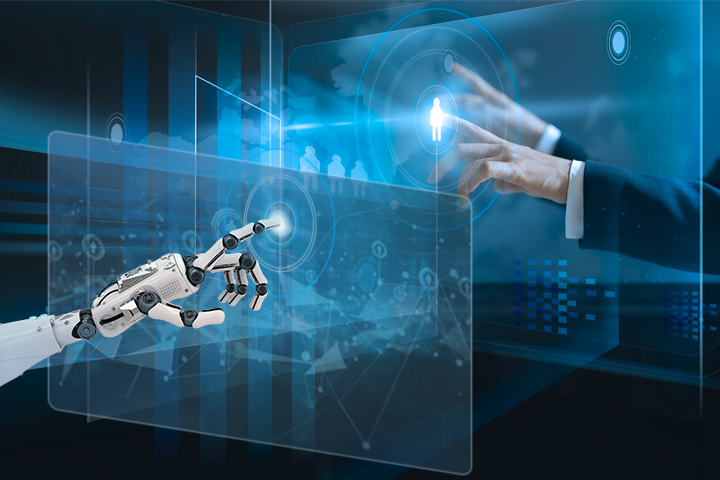The Future of Digital Is Human

The journey towards digital starts with a story of humans using technology – an evolution that changed how we perceive, think, and act in the world around us. Today, digital experiences are measured by how well they reflect our human attributes back to us. Instead of just harnessing the power of technology in new ways, meaningful innovation goes beyond our human needs to the aspirations and beliefs that fuel those needs. Good digital experiences start from the perspective of what humans can do, are learning to do, and need to do.
Understanding the human-technology relationship necessitates our acceptance that we exist in a digital world in which we are active participants. Digital becomes a state of mind that cannot be separated from us, even if our devices are.
It embraces what makes us human at the core:
- Our emotions and ability to empathize
- Our need to know and understand things
- Our desire to connect and be accepted
- Our ability to create and leave our mark on the world
- Our sense of ethics and value
- Our ability to distinguish between what is right and wrong
In the future, the digital experience will need to feel authentically human. Technology can process and analyze things to make recommendations, it can learn and expand its knowledge, it might even contribute based on ideas of compassion as it continues to grow in the future, but it will always be bound by the rules that made it what it is.
That said, it’s technology’s ability to grow exponentially that requires us to develop a symbiotic relationship with it. One that positions us as true partners and collaborators where we both contribute in those ways that we innately excel.
A human-centric digital experience must:
- Equip people with smart information – enabling them to make good decisions that stay true to who they are, as well as align to values and goals of the community they belong to
- Instill confidence – supporting them to take the action they need to take, uphold the beliefs that they hold dear, and act on the goals that they have set for the future
- Give them a sense of belonging – encouraging them to contribute and feel like they have made a lasting impact that delivers measurable value
- Impart a feeling of being supported and valued – empowering them to take risks, experiment, and succeed or fail without apology
One essential aspect of this new experience will be its adaptability. Designers’ understanding of both collective and individual needs will enable new technologies to adapt based on context. This understanding might start with data about a specific individual, but will come into its own based on its ability to formulate patterns of understanding about groups of people. Eventually this understanding will establish a common framework into which other types of information – emotional, belief systems, values, and goals (for example) – can be layered. Situating the individual in the context of the common framework will deliver a relevant and motivational experience that drives people to act, to change, and embrace what needs to be done.
Human-centric digital experiences will inspire creativity and innovation by creating a space for people to work with technology to better understand the problem they are solving for, and to ask “why this challenge?” and “why now?” Technology will be a powerful contributor in this context because of its capacity to know and learn so deeply and so quickly. The role of people will be to teach technology to be smarter by imparting additional knowledge that can help inform, guide, and shape raw creativity into innovation. In other words, technology holds the potential to make abstract inspiration a tangible thing that can be realized quickly and iterated upon even faster.
To prosper from the human-technology partnership in new and more impactful ways, people will need to do more than adopt new ways of incorporating technology into their daily lives of work and play; digital design must reflect new ways of understanding of what it means to be digital.
About this article
POSTED: May 12th, 2017
TAGS: consumer-grade experiences, experience design, human-centered design, personal assistant
